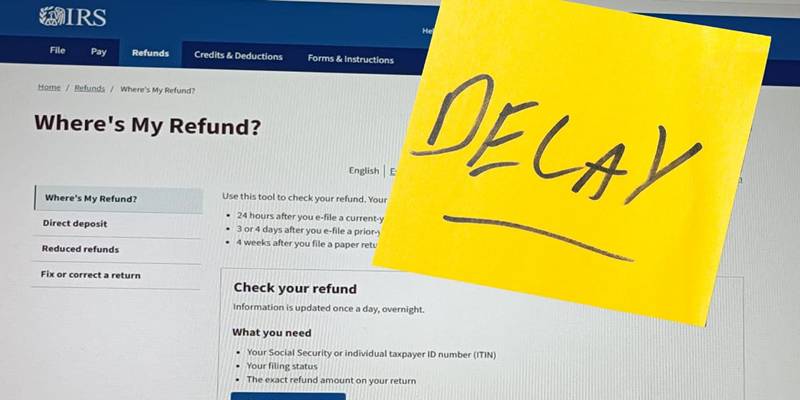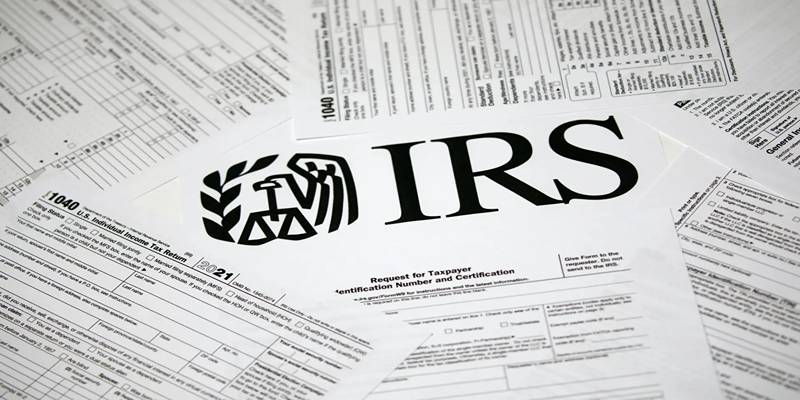As the 2025 tax season kicks off, millions of Americans are eagerly awaiting their tax refunds. For many, a refund provides critical financial relief or funds major expenses. However, delays in processing refunds have increasingly become a common frustration.
If you're wondering why your 2025 tax refund is taking longer than expected—or hoping to avoid any holdups—understanding the main reasons behind IRS delays and knowing what actions you can take is key. Here's everything you need to know.
Common Reasons for 2025 Tax Refund Delays
Waiting for your tax refund can be stressful, especially when delays happen without clear communication. Several common issues can slow down the IRS processing timeline, even if you filed early or electronically. Here are the key reasons why your refund might be delayed this year.
1. Increased Filing Errors
Simple mistakes—such as incorrect Social Security numbers, math errors, missing information, or wrong bank account numbers—are major causes of refund delays. Even minor errors require manual review by IRS agents, slowing down the process significantly.
2. Claiming Certain Credits
Tax returns claiming refundable credits like the Earned Income Tax Credit (EITC) or Additional Child Tax Credit (ACTC) often face extra scrutiny. Federal law mandates that refunds involving these credits cannot be issued before mid-February, even if you file early, to prevent fraudulent claims.
3. Paper Returns Take Longer
While e-filing has become the norm, some taxpayers still mail paper returns. Paper filings take much longer to process because they require manual entry and review by IRS personnel, especially if the IRS is dealing with staffing shortages or a backlog from prior years.
4. Identity Verification Issues
If your return triggers IRS fraud detection systems, you may be asked to verify your identity before your refund can be processed. While these measures protect taxpayers, they inevitably cause delays.
5. Processing Backlogs
Despite improvements, the IRS continues to experience occasional backlogs, especially during peak filing times or if major tax law changes were implemented recently. High volumes of returns can stretch IRS resources thin, impacting refund timelines.
6. Incorrect Banking Information
Direct deposit is the fastest way to receive your refund, but if your account or routing number is wrong, it could cause weeks of delays as the IRS works to reroute your refund or issue a paper check.
How to Avoid Refund Delays in 2025?

While some refund delays are out of your control, taking a few proactive steps can greatly reduce your chances of getting stuck in the backlog. Here's what you can do to help ensure a faster, smoother refund process.
1. File Electronically and Choose Direct Deposit
E-filing remains the fastest and safest way to submit your return. Pair it with direct deposit into your bank account to speed up your refund timeline. Avoid paper returns unless absolutely necessary.
2. Double-Check Your Information
Before you file, review every detail carefully: names, Social Security numbers, addresses, banking info, and calculations. Catching errors early can prevent lengthy manual reviews by the IRS.
3. File Early in the Season
Submitting your tax return early reduces the chance of processing delays caused by the heavy volume of returns submitted closer to the tax deadline.
4. Respond Promptly to IRS Requests
If the IRS contacts you requesting more information or asking you to verify your identity, respond as quickly as possible to keep your refund moving.
5. Track Your Refund Status
Use the IRS "Where's My Refund?" tool or the IRS2Go mobile app to monitor your refund's progress. Updates are typically available 24 hours after e-filing or about four weeks after mailing a paper return.
6. Be Patient, but Stay Informed
While most refunds are issued within 21 days of filing electronically, exceptions happen. Stay informed by checking your status regularly, but understand that the IRS cannot legally issue certain refunds until mid-February if specific credits are claimed.
How Much Smaller Could Refunds Be?
While refund amounts vary greatly depending on income, credits, and deductions, early IRS estimates suggest:
- The average refund could be 5% to 8% smaller than last year.
- For context, the average refund in 2024 was approximately $2,900.
- In 2025, it may drop closer to $2,650–$2,750, depending on the taxpayer's specific circumstances.
Although these aren't drastic declines, for households that rely on their tax refund for significant expenses, even a few hundred dollars less could have a noticeable impact.
Who Will Feel the Impact the Most?

Certain groups are more likely to notice a difference:
- Families with children: With the Child Tax Credit reverting to its pre-pandemic amount, many families will receive less.
- Low- and moderate-income earners: Smaller EITC amounts mean a reduction in expected refunds.
- People who adjusted their W-4s: Those who lowered their withholdings may be surprised at a lower refund or an unexpected balance due.
- First-time filers post-pandemic: Younger taxpayers entering the workforce in the post-pandemic economy may see smaller refunds than friends or family members who benefited from past credits.
Why a Smaller Refund Isn't Always Bad?
It's worth remembering: a smaller refund doesn't necessarily mean you're financially worse off. A tax refund simply means you overpaid on your taxes during the year, and the government is returning the excess. If your refund is smaller because you adjusted your withholdings correctly, it could mean you kept more of your earnings throughout the year—money you could have invested, saved, or used for expenses instead of giving the government an interest-free loan.
Conclusion
While refund delays can be frustrating, many of them can be avoided with careful preparation. By filing early, e-filing, double-checking your information, and opting for direct deposit, you can significantly improve your chances of receiving your 2025 tax refund on time.
If you find yourself waiting longer than expected, stay proactive—use the IRS tools available, respond promptly to any requests, and remain patient. With a little planning, you can minimize delays and enjoy the benefits of your refund sooner rather than later.












